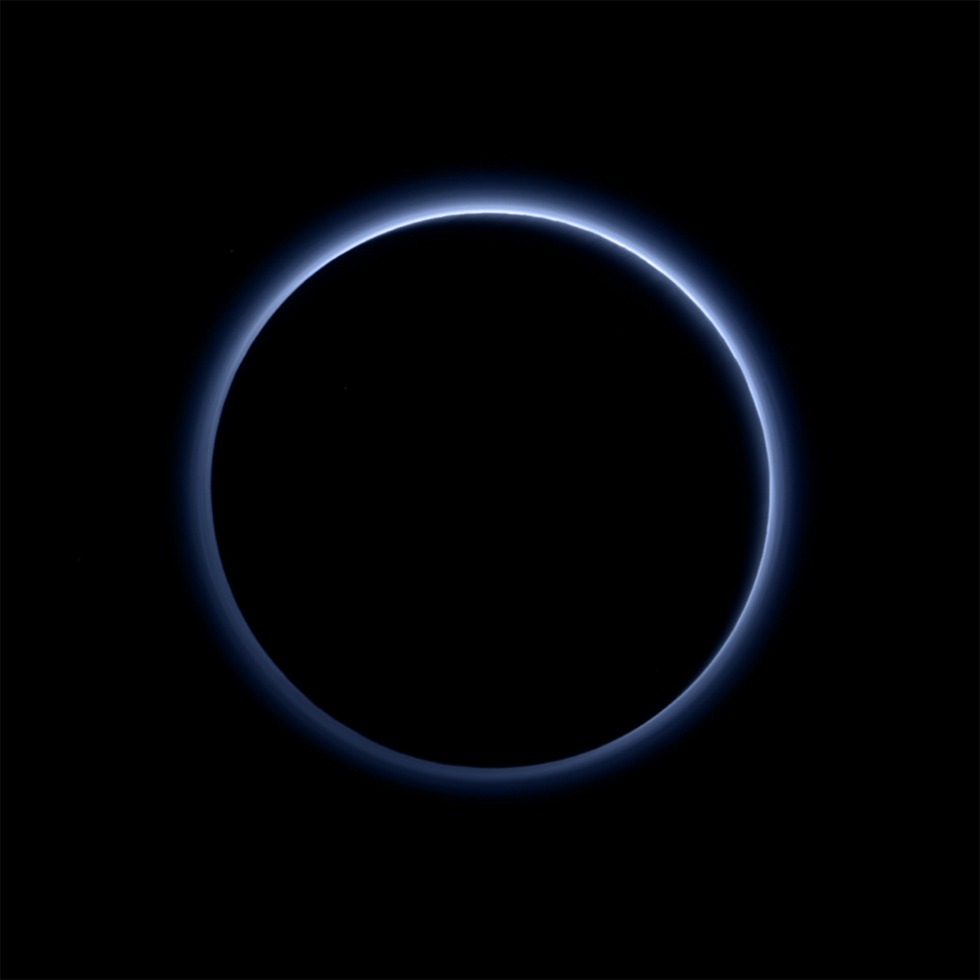
Pluto’s Blue Sky: Pluto’s haze layer shows its blue color in this picture taken by the New Horizons Ralph/Multispectral Visible Imaging Camera. (Photo source: NASA/JHUAPL/SwRI)\n

Scientists at NASA were surprised when a photo transmitted by the New Horizons spacecraft last week revealed that Pluto has blue skies and frozen ice.
“Who would have expected a blue sky in the Kuiper Belt? It’s gorgeous,” said Alan Stern, New Horizons principal investigator from Southwest Research Institute.

The haze particulars themselves are likely gray or red, NASA said, but they reflect blue light.
“That striking blue tint tells us about the size and composition of the haze particles,” said science team researcher Carly Howett, also of SwRI. “A blue sky often results from scattering of sunlight by very small particles. On Earth, those particles are very tiny nitrogen molecules. On Pluto they appear to be larger — but still relatively small — soot-like particles we call tholins.”
New Horizons also made a second discovery, characterized as "significant" by the space agency: Pluto's surface contains several small regions of water ice.

“Large expanses of Pluto don’t show exposed water ice,” said science team member Jason Cook, of SwRI, “because it’s apparently masked by other, more volatile ices across most of the planet. Understanding why water appears exactly where it does, and not in other places, is a challenge that we are digging into.”
NASA said that the New Horizons spacecraft is currently 3.1 billion miles away from Earth.
—
Follow the author of this story on Twitter and Facebook: